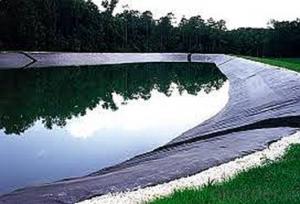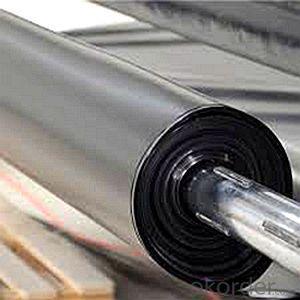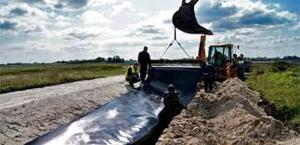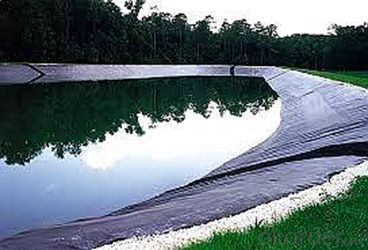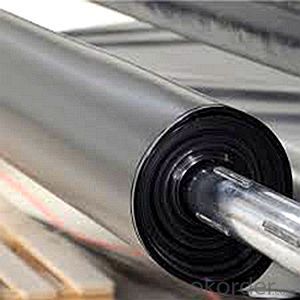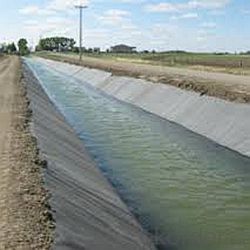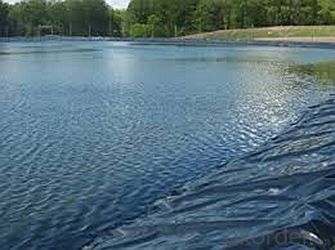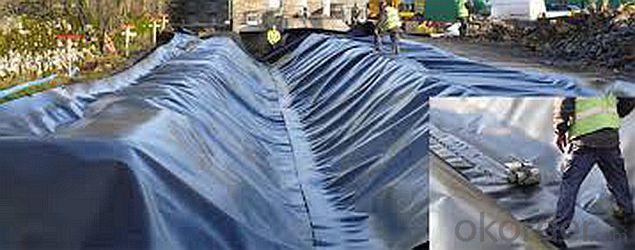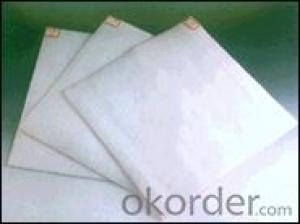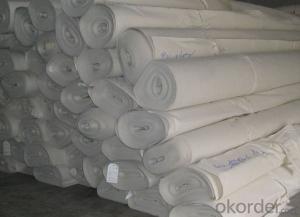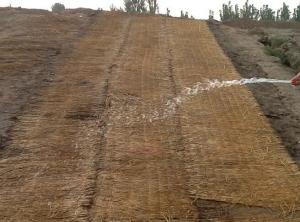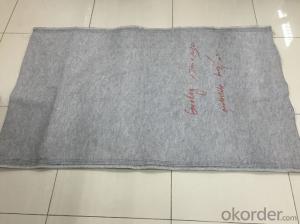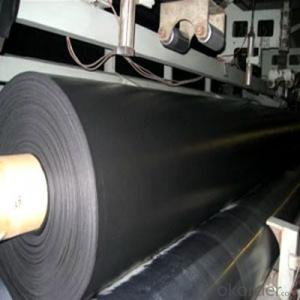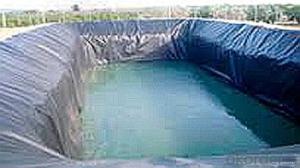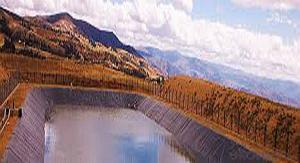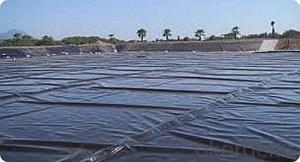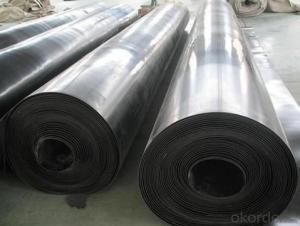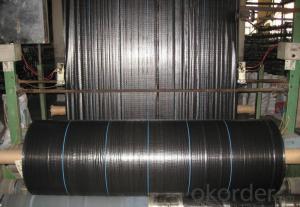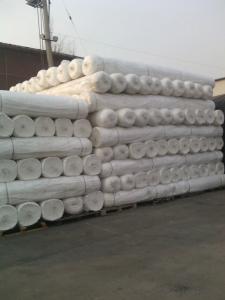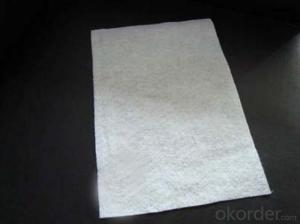Mirafi 500x Woven Geotextile Reinforced 2024 High-Density Polyethylene (HDPE) Geomembrane for Agriculture Industry
- Loading Port:
- China main port
- Payment Terms:
- TT OR LC
- Min Order Qty:
- 1000 m²
- Supply Capability:
- 1000000 m²/month
OKorder Service Pledge
OKorder Financial Service
You Might Also Like
Specification
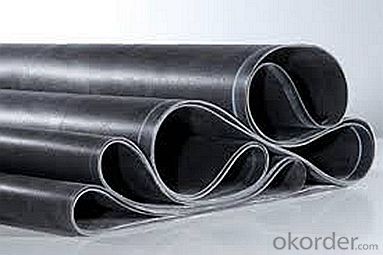
Product description
HDPE Geomembrane is mainly made of high density polyethylene and little carbon black, also with some antioxidant, UV absorbent, stabilizer and so on.
Type:HDPE geomembrane
Material: High-density polyethyle Material Low-density Polyethylene
Thickness:0.1mm~3.0mm
Roll width:1m~8m Roll length:50m~100m
Color:Black or at your request
Density: 0.94g /cm3
3.Product Application Range
1) Domestic and Hazardous Waste landfills
2) Landfill closures
3) Heap leach mining and tailing dams
4) Biogas Management
5) Floating Covers
6) Waste water treatment reservoirs
7) Water conveyance channels and reservoirs
Packaging & Shipping
Packing: PLASTIC FILM INSIDE, AND WOVEN BAG OUTSIDE
Shipping: About 15 days after receipt the deposit
geotextile fabric
permeability,filtration,easy for construction
ISO and CE certificate
Good quality and competitive price
Our Service
Quality assurance
1.On a regular basis or as per your request,we entrust national testing agencies to conduct quality inspections
2. Strictly in accordance with the ISO9001-2008 international quality system standard,we monitor and manage the whole process throughout production,quality testing,and measurement to ensure product quality
3. For quality-related construction delay or substandard construction(except for damage or losses due to customer’s responsibility or irresistible natural disasters),we have refunding,replacement,and repair services.We will respond to customers’ feedbacks on quality issues within 24 hours.
After-sales service
1.In order to provide customers with comprehensive technical support,we will provide technical and other related information upon request in a timely manner.
2.In required,we will appoint specialized technicians to the construction site to give technical trainings to construction people,and offer technical guidance throughout the whole construction process.
3.For damage due to shipment and delivery,after we receive the complaint,we will check the issure through provided pictures and videos.If our responsibility is confirmed,we wil offer free replacement.
4.When the construction is completed,as your request,our technical staff may participate in the final acceptance.
FAQ:
Q: What kind of payments does jenor support?
A: T/T, L/C, Cash are accepted.
Q: Do you charge for the samples?
A: Accordeing to our company policy, the samples are free, we only charge the freight fee. And we will return the freight fee during the next order.
Q: Can you produce according to customers' design?
A: Sure, we are professional manufacturer, OEM and ODM are both welcome.
Q: Do you have other products?
A: Yes, please check the pictures:
- Q: How do geotextiles help in preventing differential settlement?
- Geotextiles help in preventing differential settlement by distributing and equalizing the load across a larger surface area, thereby reducing the differential settlement that occurs between different soil layers.
- Q: What are the different geotextile reinforcement techniques for slopes?
- Some of the different geotextile reinforcement techniques for slopes include the use of geotextile fabrics, geogrids, and geocells. Geotextile fabrics are commonly used to stabilize slopes by providing separation and filtration of soil particles. Geogrids, on the other hand, are high-strength materials that are used to reinforce soil and increase its stability. Geocells are three-dimensional cellular structures that can be filled with soil or other materials to create a stable slope. These techniques can be used individually or in combination to provide effective reinforcement for slopes and prevent erosion.
- Q: Weaving geotextile construction should pay attention to what
- Weaving geotextile construction specifications: 1, before the construction of roadbed should be integrated clean up, the surface shall not have sharp corners. 2, geotextile is best to use mechanical erection, can also be used artificial laying. When laying, it should be noted that the rough side of the singeing up, and then one end fixed with a fixed, mechanical or human tension, tensile elongation of about 1 & amp;% to 1 & amp;%, Facing front laying. The fixture includes fixed and fixed metal. Fixed nails should be used cement nails or nails, nail length 8 ~ 10cm fixed iron can be thick lmm, width 3mm of the strip. 3, weaving geotextile and the length of the long, should be used industrial sewing machine sewing, sewing method using "dow" and "seam". Suture and geotextile should have a significant color difference in order to facilitate inspection.
- Q: How do geotextiles help with sediment retention in sediment basins?
- Geotextiles help with sediment retention in sediment basins by acting as a barrier that filters and separates sediment from water. They allow water to pass through while trapping and retaining sediment particles, preventing them from being washed away. This helps to reduce erosion and sedimentation in the basins, promoting cleaner water discharge and maintaining the overall effectiveness of the sediment basin.
- Q: What are the key factors affecting the clogging behavior of geotextiles?
- The key factors affecting the clogging behavior of geotextiles include the particle size and gradation of the soil or other material being filtered, the permeability and porosity of the geotextile, the hydraulic loading conditions, the presence of fines or clay particles in the soil, and the duration of exposure to clogging agents. Other factors such as the geotextile's physical and chemical properties, the presence of biological organisms, and the maintenance practices also play a role in determining the clogging behavior.
- Q: Do geotextiles require regular maintenance?
- Yes, geotextiles do require regular maintenance. This includes checking for any damage or wear, removing debris or sediment build-up, and ensuring proper drainage. Regular inspections and maintenance help to extend the lifespan and effectiveness of geotextiles in various applications.
- Q: How do geotextiles help in reducing the settlement of structures on soft soils?
- Geotextiles help in reducing the settlement of structures on soft soils by providing reinforcement and stabilization. They are placed beneath the foundation of the structure to distribute the load and prevent the soil from excessive compression. The geotextiles act as a barrier, preventing the intermixing of soil particles and maintaining soil structure, which ultimately reduces settlement and improves the overall stability of the structure.
- Q: Can geotextiles be used in retaining wall construction?
- Yes, geotextiles can be used in retaining wall construction. They are commonly used as a reinforcement material to improve the stability and strength of the wall. Geotextiles help in preventing soil erosion, promoting drainage, and reducing the risk of wall failure.
- Q: How do geotextiles help with erosion control in riverbanks?
- Geotextiles help with erosion control in riverbanks by acting as a barrier and stabilizing the soil. They prevent the soil particles from being washed away by the flowing water, while still allowing water to pass through. This helps to reduce the velocity of the water, minimizing the impact of erosive forces and protecting the riverbank from further degradation.
- Q: What are the advantages of using geotextiles in shoreline stabilization?
- Geotextiles offer several advantages in shoreline stabilization. Firstly, they provide effective erosion control by preventing soil erosion and minimizing sediment transport. Secondly, they enhance the stability and strength of the shoreline, reducing the risk of collapse or slumping. Additionally, geotextiles allow for better drainage and water filtration, which helps maintain a healthy ecosystem by preventing stagnant water and promoting the growth of vegetation. Moreover, they are easy to install and maintain, making them a cost-effective solution for shoreline stabilization projects. Lastly, geotextiles are environmentally friendly as they are typically made from recycled materials and can be easily removed or replaced if necessary.
Send your message to us
Mirafi 500x Woven Geotextile Reinforced 2024 High-Density Polyethylene (HDPE) Geomembrane for Agriculture Industry
- Loading Port:
- China main port
- Payment Terms:
- TT OR LC
- Min Order Qty:
- 1000 m²
- Supply Capability:
- 1000000 m²/month
OKorder Service Pledge
OKorder Financial Service
Similar products
Hot products
Hot Searches
Related keywords
